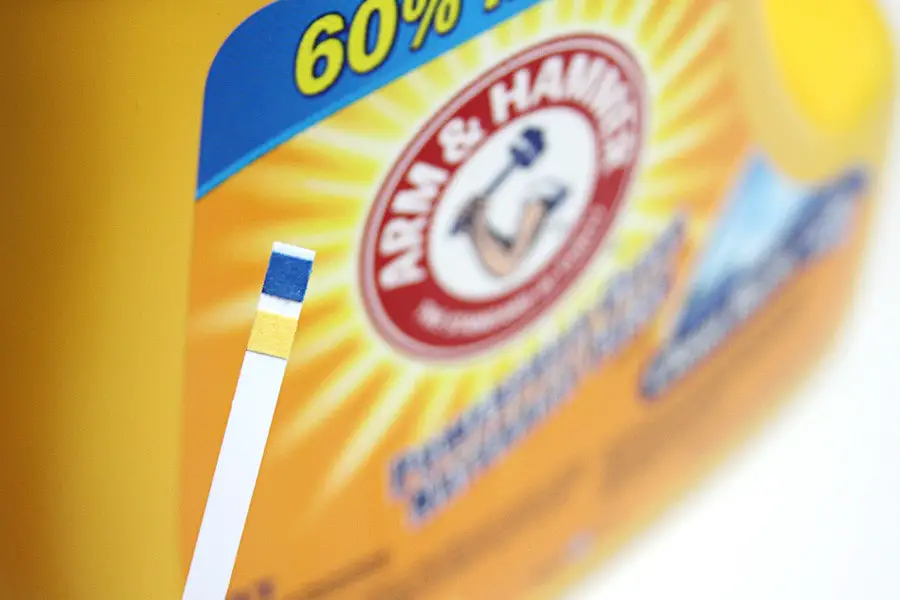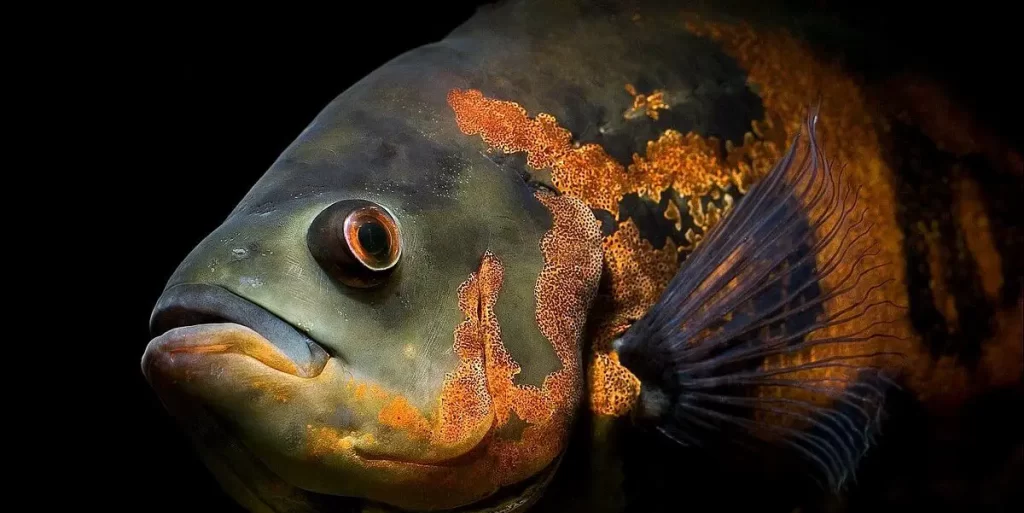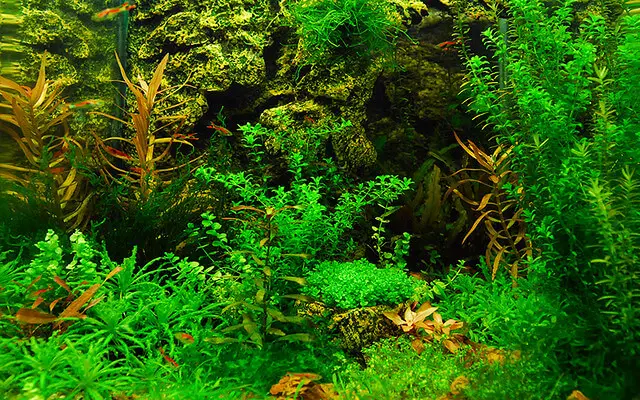The aquarium water comprises various parameters that fish owners have to maintain regularly. Among the parameters, the critical one, and the one you have to monitor regularly is the pH level. and in this article, we will be focusing on “How to increase pH level in a freshwater tank” if the pH of your tank is too low.
pH stands for “power of Hydrogen”. Maintaining pH level means balancing the acidity in the water. Different species of fish have different pH levels that you should maintain if you have multiple species in your tank. Species that come from Saltwater need a pH level of 8 or above. The fish from lakes such as African cichlids also need a pH level of 8 or above. The freshwater and tropical fish need the pH level to be lower up to only 5.5 or 6.
Freshwater species such as tetras, angels, livebearers, etc. need to live in slightly more acidic water. Hence, if you have these fish in your tank, you should maintain the pH level accordingly.
To know which fish requires what pH level, read the bio of the fish.
Do not forget that your pH level will not remain the same throughout the days. You need to check the pH of your tank water at least once a week; if there have been any fluctuations in the pH. If you fail to monitor the changes in pH level, you can find your fish in distress, and their health can deteriorate, sometimes killing them as well.
You have no reason to worry about regulating the pH levels, as it is very simple. In this article, I will provide all the necessary information about the importance of pH level, how you can adjust it as per your fish’s requirement.
Continue reading further.
Importance of Maintaining pH Level
You need to regulate the pH level in your aquarium for the healthy life of your fish. Hence, pH plays a significant role in creating water suitable for your fish.
pH is measured on the scale of 0 to 14, making the pH level 7 as neutral. The pH level below 7.0 is acidic, and above 7.0 is alkaline. For freshwater fish, the pH should be acidic side at all costs.

When I say acidic, it does not mean that freshwater fish will require a pH of -1 or 1. The level should be lowered than 5. Most of the freshwater species will require around 5.0 to 6.5 and not anymore or less.
If the pH level rises, along with it also increases the toxins and harmful materials such as ammonia. If there is a decrease in the pH, then also there will be the development of unwanted acids such as Hydrochloric Acid (HCL), battery acid, gastric acid, etc.
Your fish can be very sensitive to this kind of change. Therefore, regulating it is for the best interest of your fish. Monitoring and maintaining the pH will prevent harmful effects that can be fatal to your fish.
How Often Should you Check the pH of your Tank Water?
It is said, “Prevention is better than cure.” Thus, it will be beneficial for your fish if you are regular with checking the pH. You can do this before your fish show any illness, stress, or abnormality. If you are able to monitor the pH, then you will notice even the slightest changes in your tank water, as well as how it is affecting your fish.
Hence, you should test the pH every week or once in two weeks. If you are not able to do this, then you need to monitor it at least twice a month. This is important, as you need to identify problems before they become severe to your fish.
Additionally, you should remember that the pH level could vary at different times of the day. You can be confused if you find constant changes at the level when you test it during different times of the day. You should pick a constant time to check for this level. I recommend you to test only during the afternoons.
If you are thinking about purchasing new fish, then also you need to check the pH. You should make sure that the fish get the same pH as they are living before. For this, you can consult with the shopkeepers about the fish’s living conditions and maintain it accordingly.
Increasing the pH level
Most aquarists try to increase the pH level when you want to mimic the natural habitat of your fish. Much freshwater fish such as livebearers and cichlids prefer the water to become slightly more alkaline. It is preferred that fish should adapt to the pH of the tank rather than to match the pH level as per the fish’s preference.
However, there might be some cases where you need to increase the pH level of your tank to stabilize the tank environment
Some of the ways in which you can increase the pH level are discussed below.
Partial Water Changes
As I have mentioned previously, the pH level can fluctuate in a single day. However, there can be a drastic drop in the pH level after some time. This is where the water changes come in.
This is the easiest way to raise the pH level of your tank water. You can vacuum the substrate and the uneaten foods from the tank. You need to replace the tank water in smaller amounts regularly. This method is practiced by most rather than the large water replacements.
The partial water changes in smaller amounts are essential, as this process does not shock your fish with a sudden increase in the pH level.
Adding Rocks or Substrate
Some rocks can play a role in increasing the pH level. You can use aquarium substrate like coral or sand with Aragonite, crushed oyster shell as well as limestone.
You can add crushed corals or oysters in a filter media bag or a box filter. You can hide these behind the rocks that you want to highlight.
One thing that you should keep in mind while following this process is that it can increase the levels of pH drastically. The plus point of using the oyster shell is that you can identify when the shell’s get depleted. After this, you can test the pH level again.
Adding Clay
Another popular method that you can follow is to add some calcium montmorillonite clay to raise the pH level. You can carry out the process of adding this clay with every water change.
Adding calcium montmorillonite clay will help to balance out the necessary minerals and alkalinity in your tank. In addition, this will also help in the growth of your aquatic plants, has healing properties, and keeps away algae.
You can find this in any store as Calcium Bentonite Clay Powder. I recommend that you only try the pure, edible grade and not pet-grade because pet-grade can get contaminated easily.
Aeration
You can commonly know this as air circulation. You need to make sure that your tank is getting a good amount of oxygen. Sometimes there can be an excessive amount of carbon dioxide concentration (CO2).
Hence, you need to increase the oxygen concentration (O2), which can tone down the carbon dioxide concentration in the water. You can achieve this by air circulation.
In some cases, there is the use of Filters such as Hang on Back (HOB) filters that adequately aerate the tank. You can also slightly open windows for the fish and avoid smoking. You can regulate the air circulation in this way, which in turn increases the pH level in these simple ways.
You can also use air stones. Air stones are the porous stones that connect to your air pump in the aquarium. These produce the bubbles. The generation of bubbles disturbs the surface that automatically causes more water circulation, which helps to aerate the water tank.
Baking Soda
Among other processes, adding baking soda to increase pH level of your tank is a continuous process. You cannot add baking soda today and forget about it for a long time. If you want to use baking soda, you must keep on using it in a small amount gradually until your pH level is maintained.
Likewise, you need to make sure that you do not add this in a heavy amount. You cannot add too much at once, as it will cause conflict in the water parameters, spiking the pH, and causes the death of your fish.
The general rule of thumb for adding baking soda: just add 1 teaspoon per 5 gallons. You can first mix the baking soda into some water before adding it into your tank. You need to be very careful and take it real slow so that it does not stress your fish.
Removing Substances that may be Lowering the pH
You may add some decorative items or other items unknowingly that can cause the pH level to drop in your tank. Once you are aware of it, you can remove these materials from the tank to increase pH level.
For instance, you may have driftwood, cactus wood, and leaf litter present in your tank. These will drop the pH level, and you should remove them immediately. Another thing that can decrease the pH is peat moss. Some can use this to filter and as a substrate. Therefore, avoid using this immediately if you want to raise pH.
Another factor that I have mentioned earlier in the presence of CO2 in your water. Plant enthusiasts may add CO2, which can decrease the pH level.
You also need to remove any kind of pollutants in the water, as this will also affect dropping the pH level.
Using Chemicals
The use of the chemical is the last resort to raise the pH levels. When you have tried everything else, and you are not able to maintain and regulate the pH in your tank, then only using a chemical is recommended.
There are several chemicals available in the market that will help to increase the pH. However, these items will not maintain or stabilize the pH level. This only helps you solve the problem temporarily.
You also need to be very careful while using such chemicals there can be drastic and sudden changes in the water with its use. This can do worse than any good for your fish. Excess use of such chemicals in your tank can disrupt the natural conditions that you have created before.
Note that all the above processes are individual processes and not the steps. You need to follow only one procedure and not all of it. Make sure that you go for other steps only if a process is not working at all. I recommend that you choose a step that is easy for you and stick to it.
Should you Alter the pH?
Monitoring and caring for fish is a good thing. You definitely should take care of the fish and provide them with good living conditions. However, this does not mean that you overdo anything.
Sometimes, there can be harmless fluctuations in the water. Suppose the ideal pH level for your fish may 6.4, but when you test, it is 6.7. You do not need to panic when this happens. You do not start to follow all the mechanisms to drop the pH level in the tank.
First, you have to monitor the behavior of the fish. Question yourself, “Are the fish showing signs of distress?” Continue monitoring, and if the fish are fine and are happy, it is not necessary to alter the pH level.
Second, if the pH level is drastically fluctuating, sometimes dropping steadily, then only you should take action. You can consult with experts when you do this.
Sometimes if your fish are hardy, they are able to tolerate few and slight changes. If you panic and try to fix it, you may do more harm than good to your fish. So, I recommend letting the fish adapt to slight changes as well.
Conclusion
You will find all the necessary test kits in your local pet stores in order to test the pH level. You can choose from a few options. Make sure you have accurate reading before performing any changes in your water.
I have laid all the options from which you can choose the one that comforts you. It is not hard to regulate the pH level. Once you have the habit, you will never need to perform drastic measures.
Try to use fewer chemical processes as possible. You need to alter the pH only if you have to. Do not try to do it without any reason. Also, you need to try to stick to a particular process to avoid different changes.
I hope that this article has cleared your doubts on how to increase pH level in your aquarium and the process you need to follow. Make sure to check out other articles related to different kinds of fish and caring for them.






